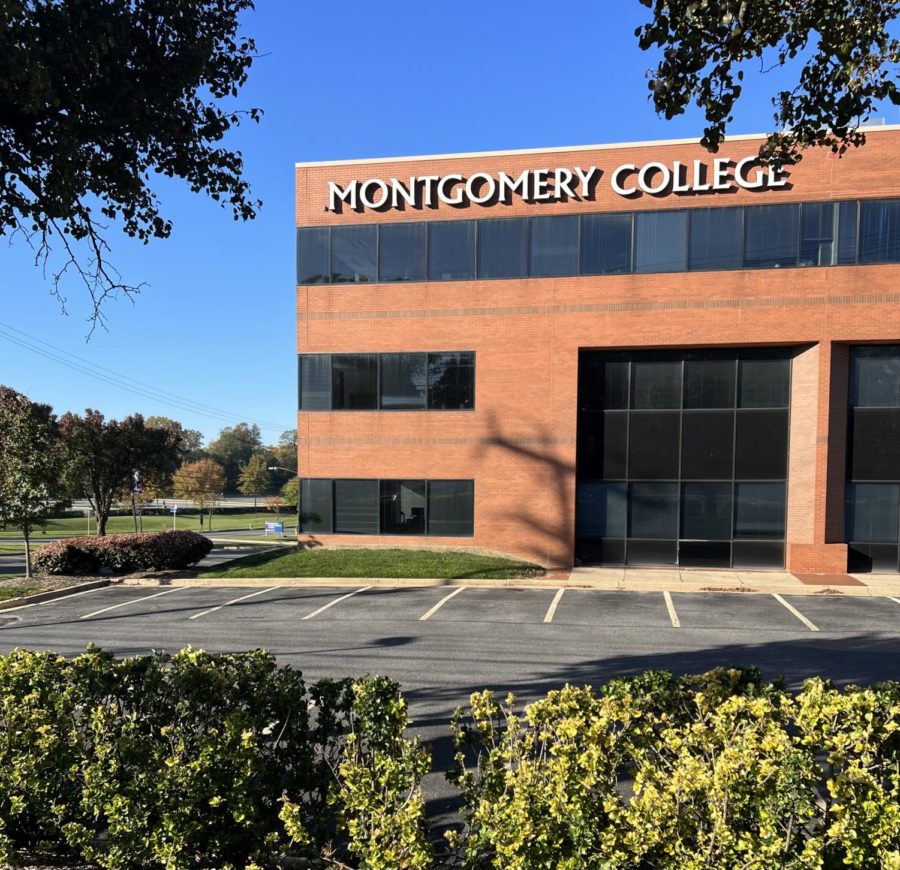Exploring the stigma of community college
Montgomery College is currently ranked the seventh best community college in the United States by WalletHub (2022)
November 10, 2022
As seniors consider where to apply for college, community colleges are often an overlooked pathway, as the “typical” direction is usually universities and four-year colleges.
Community colleges are two-year schools that can provide associate degrees, usually 60 to 70 credits, and professional certificates for 12 credits in trades such as automotive, building and manufacturing. Montgomery Community College has a campus only two miles from RM.
As one of the 16 community colleges in Maryland, Montgomery College offers a variety of different programs.
“Popular programs include business, computer science, health sciences and general studies,” Montgomery College Recruitment and College Access Specialist Fnu Nikita said.
For Montgomery College freshman and Richard Montgomery graduate Soren Kim Plank, there are definitely stigmas surrounding community colleges–one even in the term itself.
“Community college sounds lesser in a way,” Plank said. “I would either just refer to it as college or university, but then there’s like this third-tier, the word ‘community.’ It can unfortunately whittle down the attractiveness.”
High school students often refer to community colleges as a “last resort” for their future goals.
“I think I still harbor some of [the stigmas around community college] because both my parents went to really good schools. There’s this pressure to also go to a good school,” junior Hadassah Ucko said. “It’s like you could also go to community college if everything else fails because it’s always the last resort, the bad college.”
When students were asked what they know regarding community college, sophomore Jaymie Donohue said, “I know it’s cheaper, but other than that close to nothing.”
According to Montgomery College and Career Coach Craig Branagan, Montgomery College is a low-cost program compared to other public universities.
“For a semester, a Montgomery County Resident pays about $2,661 for full-time attendance, 15 credit hours, compared to an out-of-state resident who would pay $7,017 for the same credits,” Mr. Branagan said. “Over the course of a year, an MC resident pays about $5,322 for tuition and fees. A public four-year university in Maryland would cost a resident about $10,017, and a private four-year university would cost about $41,558.”
For Mr. Branagan, a major advantage of attending Montgomery College is the smaller class sizes and the supportive faculty. “The faculty ratio is 17 to 1. In my GED classes, there is an instructor, coach and a mentor assigned to help support the students with their educational needs,” he said.
The lower expense is an important factor for some students who are choosing to attend a community college.
“My whole plan was to pay as little for college as possible, and graduate with little to no debt; preferably no debt,” Plank said. “So unless I got a full ride to university through scholarships, I wouldn’t have gone to university.”
Although the cost may be cheaper, the price disparity has created a stigma.
“There’s also just the fact that you pay less, so you assume that you’re paying for worse education,” Plank said. “But the program that I am in is very well funded. It also has professors that are really passionate about what they do and teach.”
Additionally, community college can be a pathway, or stepping stone, to universities. Some students attend community college with the goal to earn an associate or complete their general prerequisites before enrolling at a university or four-year college.
For Plank, who is currently specializing in electrical work at Montgomery College, transferring is his plan.
“I want to switch to filmmaking after I get my associate’s degree,” Plank said. “I want to go to a bigger college simply not for getting an education, but more so to make friends with people who I might be working with or I might work for eventually.”
Although attaining general credits and then transferring may be less costly, there are other factors students must consider.
“I’ve been fighting my parents because I wanted to go to [community] college and then transfer into the University of Maryland, but they told me I was not allowed to,” sophomore Kylie Davis said.
The lack of desire to attend community colleges may also be due to the unfamiliarity among students who have always aimed to attend four-year institutions.
“Students tend to overlook [community college] and just focus on the big schools, but if you can’t go to those big schools, they might feel like they have no other options and just not go to school at all,” Ucko said.
For students who would like to venture into the college atmosphere while still attending high school, there are programs offered that students have the option of attending.
“Dual enrollment allows qualified students to be fully admitted and enrolled at Montgomery college while completing high school. Students can earn a college degree through our early college, middle college programs or earn individual college credits through a jump start to the college pathway, all while still completing their high school diploma requirements,” Ms. Nikita said.
Many students agree that community colleges deserve more recognition and can be a good option for students after high school.
“I know that they are a good way for people who either can’t afford colleges or don’t have high enough grades to get into other colleges, but can still get an education and earn good careers,” Ucko said. “Community colleges don’t mean that you’re less smart than anyone else.”




